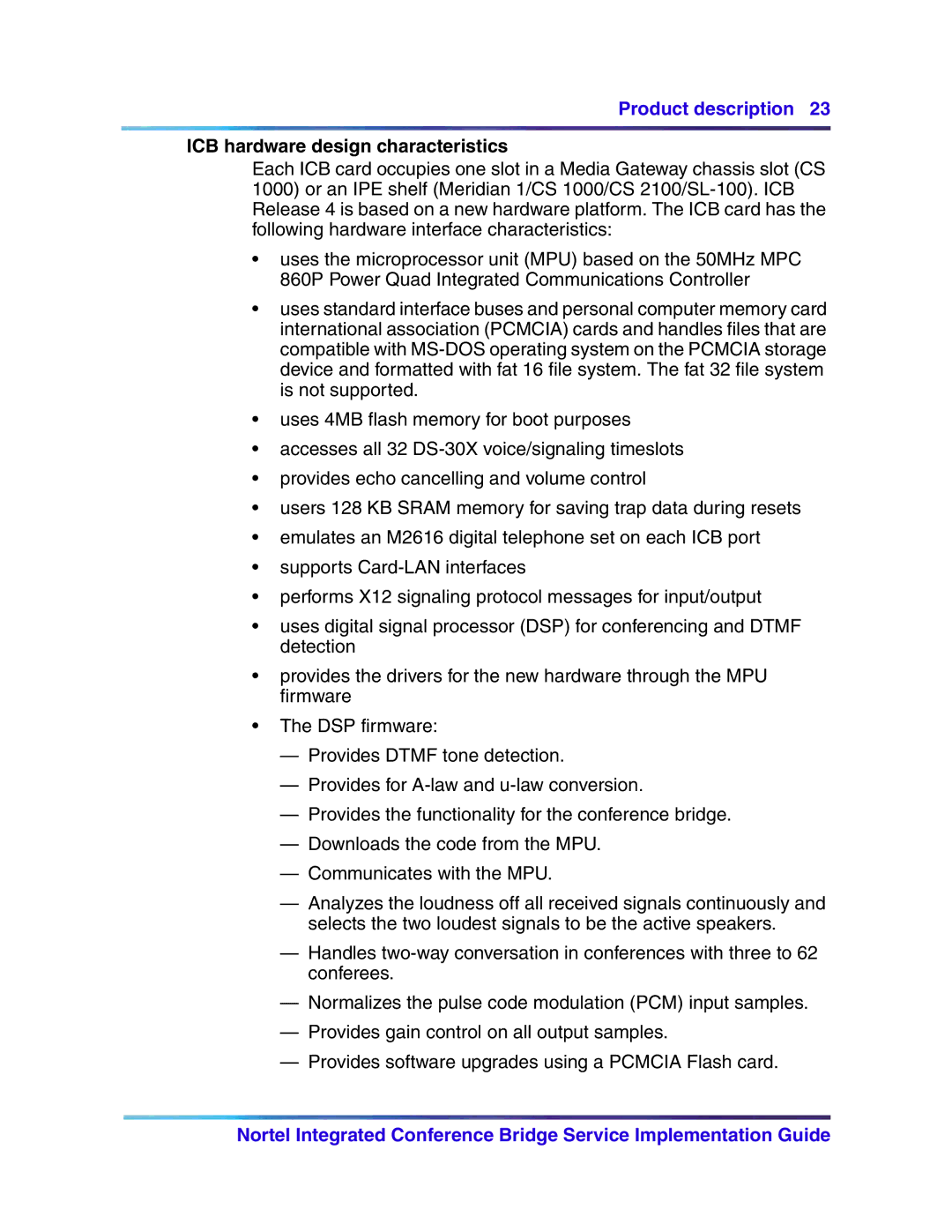
Product description 23
ICB hardware design characteristics
Each ICB card occupies one slot in a Media Gateway chassis slot (CS 1000) or an IPE shelf (Meridian 1/CS 1000/CS
•uses the microprocessor unit (MPU) based on the 50MHz MPC 860P Power Quad Integrated Communications Controller
•uses standard interface buses and personal computer memory card international association (PCMCIA) cards and handles files that are compatible with
•uses 4MB flash memory for boot purposes
•accesses all 32
•provides echo cancelling and volume control
•users 128 KB SRAM memory for saving trap data during resets
•emulates an M2616 digital telephone set on each ICB port
•supports
•performs X12 signaling protocol messages for input/output
•uses digital signal processor (DSP) for conferencing and DTMF detection
•provides the drivers for the new hardware through the MPU firmware
•The DSP firmware:
—Provides DTMF tone detection.
—Provides for
—Provides the functionality for the conference bridge.
—Downloads the code from the MPU.
—Communicates with the MPU.
—Analyzes the loudness off all received signals continuously and selects the two loudest signals to be the active speakers.
—Handles
—Normalizes the pulse code modulation (PCM) input samples.
—Provides gain control on all output samples.
—Provides software upgrades using a PCMCIA Flash card.
Nortel Integrated Conference Bridge Service Implementation Guide
